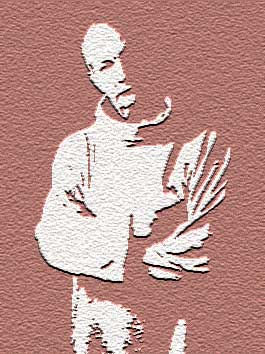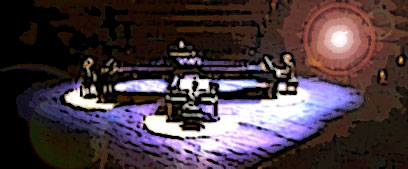 Dutch composer Simeon ten Holt wrote Canto Ostinato (mp3 file) for various instruments and flexible duration. Ten Holt uses repetition and minimalist permutations to create an original, evolving work with ever-shifting moments. These parts are woven together into an overlapping and flowing whole.
Dutch composer Simeon ten Holt wrote Canto Ostinato (mp3 file) for various instruments and flexible duration. Ten Holt uses repetition and minimalist permutations to create an original, evolving work with ever-shifting moments. These parts are woven together into an overlapping and flowing whole. One popular arrangement is to have three or four pianos facing each other in the center of a room, and normally, unlike conventional performances, the audience is allowed to move and surround the performers as they play.

Canto Ostinato has 106 figures or parts and the players themselves, decide on the stage, how many times they repeat each section, etc. Ten Holt has said, "that what happens on-stage is like you're looking at an object from different angles, and the object is changed by the input people put into it. If you look at an object from above or below, it's still the same object, but the colours are different, the shapes are different, and that's what happens on-stage. So the players' input is very important."
Canto Ostinato has become a metaphor for a new approach to design (Thackara, 2005). The composer, score, musicians, stage, and audience all interact in subtle, yet complex ways. Neither the musicians or the audience knows exactly what will happen next as the arrangement is quite flexible. But they are not flying blindly as there are principles and to a point, a score. Thus, the situation itself, in a sense, becomes designed.
Flows are not just one element of social organization, they are the expression of the processes dominating our economic, social and symbolic life - Manual Castells in The Rise of Network Society.
Notice how this relates to performance management. There is a space of flows in each performance situation -- techniques, technologies, information, sounds, symbols, people, and the performance itself. Yet, like the Canto Ostinato, while there is a score (goal or blueprint); life unfolds anew, thus, each situation basically designs itself.
Fredick Taylor's Scientific Management tried to freeze the performance and then totally script it. While Taylor's method focused primarily on the process itself, flow is more about helping people to develop so that they can perform. The manager becomes more like Ten Holt in that he or she givers her players a score to follow and conducts them, while at the same time giving them the freedom so that the situation is allowed to design itself, rather than just becoming a carbon copy. Thus, rather than just simply following a script, interaction becomes a major part of the performance.
Reference
1. Arrangement (mp3 file) by Jeroen Van Veen




No comments:
Post a Comment